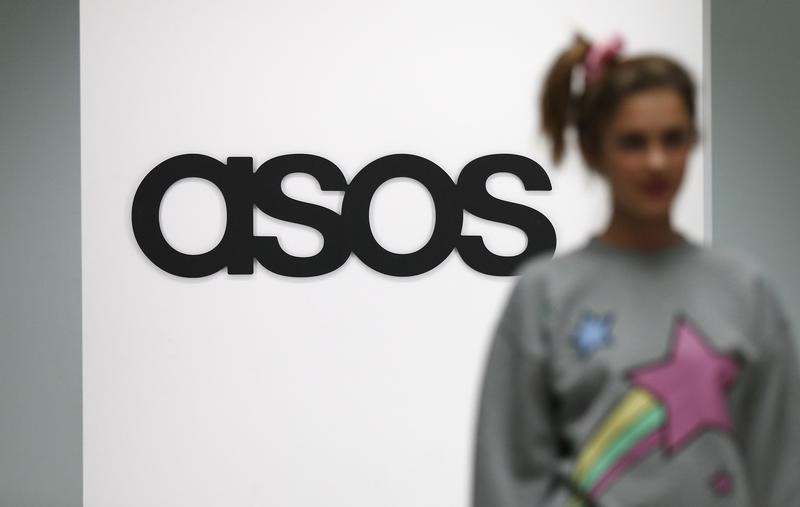This post was originally published on this site
https://i-invdn-com.akamaized.net/news/LYNXMPEB2B0HW_M.jpg
Investing.com — Asos is on the way to reclaiming its position as the U.K. fast-fashion stock of choice.
Asos (LON:ASOS) stock rose as much as 9% in early trading on Wednesday after the company said that sales and profit for the full year are likely to be “significantly above market expectations”, as a result of a second quarter that showed more than just the (now routine) benefits of being an online-only stock in the time of coronavirus.
It pared gains later to be up only 5.5% but was still on course for its highest close since November 2018. It’s now more than quadrupled from its March lows. The FTSE 100 was up 0.9% after absorbing a predictably awful 20.4% decline in GDP in the second quarter, the worst of any major industrialized economy.
Asos expects revenue to grow by between 17% and 19% and pretax profit to be between 130 million and 150 million pounds ($170 million to $196 million), due largely to the fact that customers are now retuning far fewer items.
Asos had fretted that the surge in new customers trying its services would result in a parallel surge in returns (at least, as soon as they were allowed out to the post office to send back the unwanted goods). That would have hit operating costs and margins.
But Asos appears to have underestimated the digital skills of its customer base.
“We have seen a significant and sustained reduction in returns rates since April,” the company said in a statement to the Stock Exchange on Wednesday. “In part this reflects customer demand for ‘lockdown’ categories, such as activewear and face + body. However, rates have been further suppressed below estimated levels by a prolonged shift in customer behavior towards more deliberate purchasing across all product categories, even when sales momentum has improved.” (Our Italics)
Asos still wasn’t ready to declare victory, cautioning that “the extent of this outperformance and any impact beyond this financial year will be driven by how customer shopping behaviour normalizes.”
All the same, it seems that the company has definitively put behind it the problems that caused its share price to fall by more than half in 2018, when it was replaced in many investment portfolios by rival Boohoo (LON:BOOH).
It’s now Boohoo that has more to worry about, in the shape of allegations that it turned a blind eye to potentially illegal practices in its supply chain in Leicester, where staff had been working without social distancing and on wages below the national minimum wage. Asos, by contrast, had moved its supply chain away from Leicester’s sweatshops, even though unions have raised similar – if less dramatic – complaints about its facilities elsewhere in England.
Boohoo stock also rose more than 4% on the back of Asos’ news, as investors priced in a similar development there. However, it’s still around 25% below where it was before the supply chain allegations exploded. The company has started a review into what went wrong and its outcome is still uncertain.

